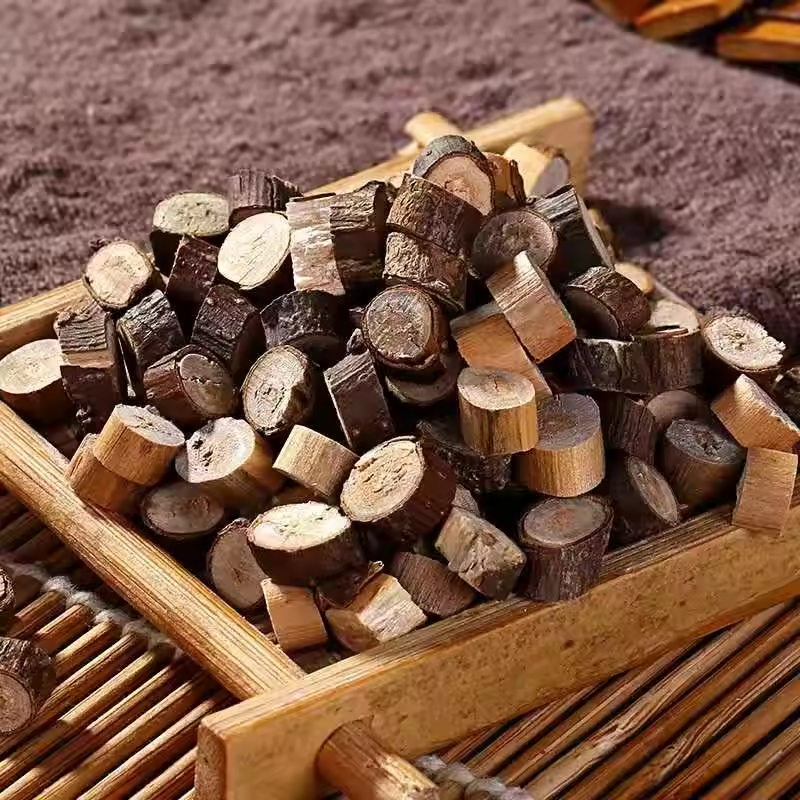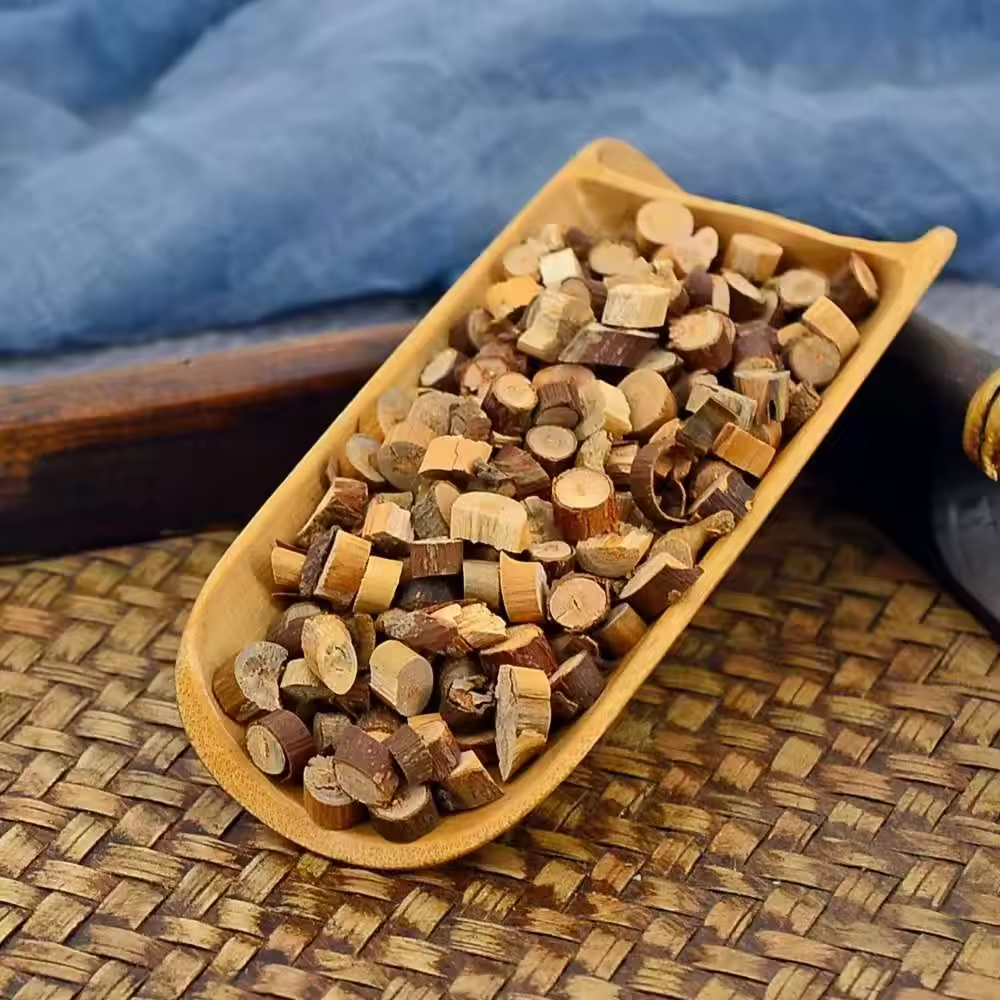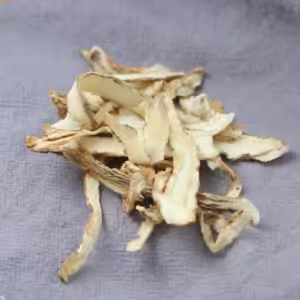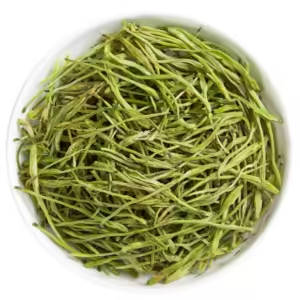Guizhi
[Medicinal Use] This product is the twigs of Lauraceae plant fungi.
[Nature, flavor and meridians] pungent, sweet, warm. Enters the heart, lung, and bladder meridians.
【Efficacy】Promotes sweating and relieves the surface, warms the meridians, unblocks yang and transforms qi.
[Clinical Application] 1. Used for superficial wind-cold syndromes
Guizhi is pungent and warm, good at dispelling wind and cold, and can cure colds, fever, and aversion to cold. It can be used regardless of sweating or no sweating. For example, if the body is not sweating due to wind-cold syndrome, it can be used together with ephedra, which has a coordinating effect and can promote sweating.
2. Used for cold-damp arthralgia, amenorrhea, abdominal pain, and dysmenorrhea.
Guizhi can warm and unblock the meridians. For cold-damp rheumatic arthralgia, it is often used in combination with aconite, Qianghuo, and Fangfeng. For amenorrhea and dysmenorrhea caused by cold qi and blood stagnation, it is often used in combination with angelica, peony, and peach kernels.
3. Used for symptoms such as phlegm, fluid retention, wheezing and cough caused by stagnation of water and dampness, and difficulty in urination.
Guizhi is warm in nature, good at unblocking yang energy, can transform yin and cold, and blocks yang qi when dealing with yin and cold. The body fluid cannot be transported and distributed, so the water and dampness are stagnant, resulting in phlegm syndrome. It is often used in combination with Poria, Atractylodes, etc.: such as bladder gasification. If you have difficulty urinating and have difficulty urinating, you can use cinnamon twig to unblock yang and transform qi, and diuretic medicine to ease urination. It is often used in combination with Polyporus polyporus and Alisma (such as Wuling powder).
[Prescription name] Guizhi, Guizhi Sichuan (wash, dry and chop into pieces)
[सामान्य खुराक र प्रयोग] 1 देखि 3 qian, डेकोक्ट र लिनुहोस्।
[Notes] 1. Although both cassia twig and ephedra can induce sweating, ephedra can relieve pain, open up the interstitial space and penetrate the hair orifices. It has a strong sweating effect, and can relieve the lungs, relieve asthma, diuresis and reduce swelling; cinnamon twig is pungent, sweet and warm. The main function is to warm and unblock the meridians, which can lead to Yang Qi and relieve the symptoms. The effect of sweating is relatively weak. Therefore, when treating superficial symptoms of wind-cold and anorexia due to wind-cold, it is often combined with ephedra to enhance its diaphoretic effect; when treating superficial syndromes of wind-cold, spontaneous sweating and aversion to wind, ephedra is not used, and is often used with peony to coordinate the body’s health and dispel cold. .
2. Guizhi is warm in nature and helps heat. If used improperly, it may damage yin and stimulate blood. Therefore, it should not be used in cases of febrile disease, yin deficiency, excessive fire, and hemorrhage.
[Examples of prescriptions] Guizhi Decoction (“Treatise on Febrile Diseases”): Guizhi, peony, licorice, ginger, and jujube. Treats exogenous wind-cold, headache, fever, sweating, bad wind, lack of thirst, etc.
Guizhi Fuling Pills (“Synopsis of the Golden Chamber”): Guizhi, Poria, paeonol, peach kernel, peony. It can be used to treat irregular menstruation in women, abdominal pain due to blood stasis, and fetal death.
Guizhi Aconite Decoction (Treatise on Febrile Diseases): Guizhi, aconite, licorice, ginger, and jujube. Treats wind-cold-dampness blockage, body pain, difficulty moving, and inability to turn freely.
[Excerpt from literature] “Ben Jing”: “It mainly refers to coughing and reversal of upper qi, congestion of qi, laryngeal obstruction, vomiting and aspiration, and sharp joints.”
“Bie Lu”: “Warms the meridians, unblocks the meridians, and relieves irritability and sweating.”
“Ben Jing Shu Zheng”: “Harmonizing yang, promoting yang, diluting water, lowering qi, promoting qi, and tonifying the middle are the six major effects of cinnamon twig.”
“Jiangsu Traditional Chinese Medicine”: “The functions of Guizhi include six major aspects: relieving the exterior and nourishing the body, clearing yang and dispersing cold, warming water vapor, replenishing internal energy, calming down and relieving blood stasis and activating blood circulation. In terms of compatibility and application: Guizhi combination Peony can harmonize the nutrient and health; combined with ephedra, it can enhance the sweating effect; combined with ginger, it has two functions: one is to synergize with pungent and disperse external evils, and the other is to warm up the cold drink in the stomach; combined with dried ginger, it also has two functions: one is to warm up The Jiao Shui drink is firstly used to warm and dispel cold; when combined with licorice, when the dosage is not very different, the sweetness of licorice is used to relieve the nature of cinnamon twig. Sometimes, the dosage of cinnamon twig must be larger than that of licorice, but when both heart yang and heart blood are deficient, licorice must be used as the main ingredient; with ginseng, one is to replenish deficiency and relieve external symptoms, and the other is to replenish qi deficiency; with astragalus to replenish deficiency; with aconite. , one is to warm yang and relieve the surface, the other is to warm the meridians and dispel cold, and the other is to warm and nourish kidney yang; it is used with Atractylodes to remove dampness; it is used with Poria to treat internal water stasis; it is used with keel and oysters to nourish the heart yang and calm the mind; it is used with Rehmannia glutinosa. Deficiency of both yin and yang; with Angelica sinensis, it mainly treats blood deficiency and cold stagnation; with Fangji, it can warm water and qi; with peach kernel, it can relieve blood stasis and activate blood circulation; with Coptis chinensis, it can combine cold and heat to treat mixed cold and heat syndrome; with gypsum, it can relieve the exterior and clear the interior. , one is to clear away internal heat; with rhubarb, one is to relieve external symptoms, one is to warm Taiyin’s cold excess, and the other is to combat blood stasis and purge heat. Guizhi must be avoided when treating febrile diseases and transforming dryness.

















समीक्षाहरू
अहिलेसम्म कुनै समीक्षाहरू छैनन्।